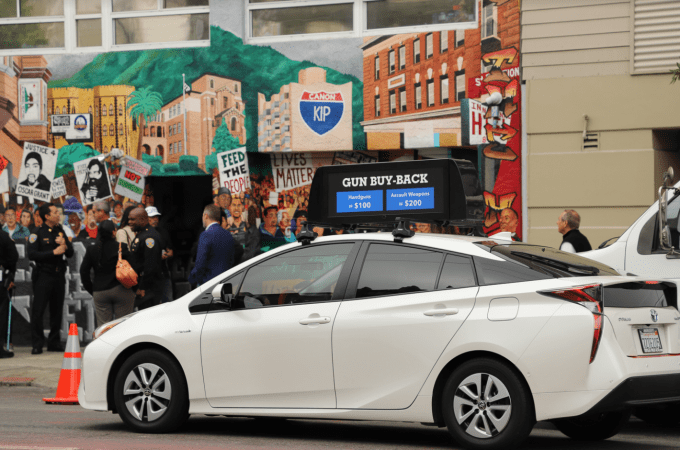Firefly, a startup that allows ridehail drivers to make money from advertising, has raised $30 million in Series A funding.
The company is about to launch in New York City, where it’s also acquiring the digital operations of advertising company Strong Outdoor. Co-founder and CEO Kaan Gunay said this will allow Firefly to start working with traditional taxis in a big way.
“It’s essentially locking in the largest taxi advertising contract, partnering with the largest taxi trade organization in the United States,” Gunay said.
Firefly already operates in San Francisco and Los Angeles, where it works with drivers for Uber, Lyft and other services to install a “digital smart screen” that can run targeted, geofenced advertising from companies like Brex, Segment, Caviar and Zumper. And although the startup is starting to work with taxis too, Gunay said it won’t be ignoring ridehail drivers: “Firefly is for everyone.”
The new funding comes just six months after Firefly announced a big seed round of $21.5 million. Gunay said that by raising even more money, the company can “make sure we are able to scale very quickly and very efficiently.”

The round was led by GV (formerly Google Ventures), with participation from NFX.
“Firefly is creating a significant new ad format at scale,” said GV’s Adam Ghobarah in a statement. “In addition to taxis, the scale of rideshare networks has created a large opportunity to provide digital out of home advertising with granular city-block and time targeting.”
The recent IPOs of Uber and Lyft have also brought more attention to the issue of driver compensation, with some drivers staging a brief strike. (Last year, Firefly said it was bringing its drivers an additional $300 per month on average.)
“In this current environment, where unfortunately it is becoming more difficult for our driver partners to make a livelihood in these expensive cities, I think having a platform like Firefly whose mission really is to help these drivers make a better living is incredible,” Gunay said. “We have been extremely lucky to see such an incredible reception from our driver partners, and we’re doing everything possible to make sure we continue to increase the income we are providing to them.”
He also described the Firefly approach as a “win-win-win scenario” — not just for drivers and advertisers, but also for local businesses, nonprofits and local governments, to whom the company has committed 10 percent of its inventory.
Comments
Post a Comment